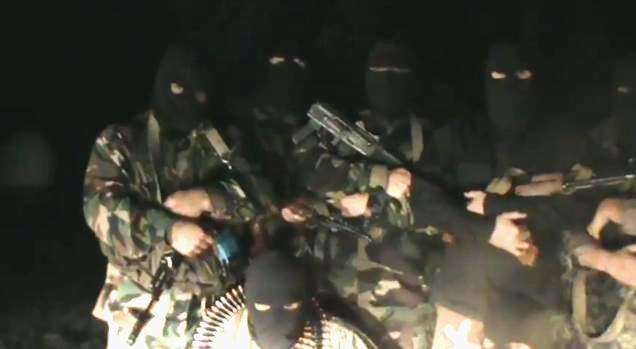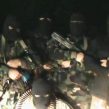
Dagestani Anti-Insurgency Vigilante Group Posts Internet Video
Publication: Eurasia Daily Monitor Volume: 9 Issue: 133
By:

As of July 11, 20 people had already been killed or wounded in insurgency-related violence in Dagestan since the beginning of the month. The total number of casualties in the whole of the North Caucasus in the same period was 26 (www.kavkaz-uzel.ru/articles/209480/). Out of the 20 casualties reported in Dagestan, 17 were killed (three police officers and 14 suspected rebels). These figures are very high even for a region as unstable as Dagestan. Whether this spike in casualties in the republic is connected to the recent redeployment of the Interior Ministry troops from Chechnya to Dagestan (https://kavkasia.net/Russia/2012/1341707147.php) is not yet clear, given that the pattern of special operations is not yet discernible. More often than not, the police in Dagestan appear to act chaotically. For example, any car that does not stop at the request of police can be fired upon and the people in the car who are killed subsequently declared to have been rebels.
The Republic of Dagestan is unique not only because of its multiple indigenous ethnic groups (www.dgpu.ru/content/moidag/), but also because of its myriad social issues, such as criminalization, clan structure, corruption and interethnic issues mainly linked to land redistribution in the republic’s lowlands (https://mn.ru/newspaper_zoom/20110518/301963625.html), and so on. Yet the media in the republic portray an alternate reality. A majority of the newspapers do not write about militant attacks in Dagestan or about the killings of the suspected rebels, the disappearance of young people, or the arrests in retaliation for visiting the so-called Wahhabi mosques. Instead, the media reports on athletes’ achievements, or what and how many crops were harvested in the republic, as if nothing else were happening. It is thus unclear who killed 17 people – or why – during just one week in Dagestan.
Apparently out of hopelessness, the authorities could not come up with anything more efficient than reverting to intimidation of members of the armed resistance. At the start of July, a video address by a group of masked people appeared on the Internet (www.youtube.com/watch?v=KwEwpkB7OqQ&feature=player_embedded). Those featured in the video called themselves “Robin Hoods” and addressed the leader of the armed underground Temirbek Temirbekov (aka Emir Abu Muaz) in Kizilyurt district. Speaking on behalf of Kizilyurt residents, the “Robin Hoods” threatened reprisals against Temirbekov and those who had joined him in the insurgency. The militants quickly responded by claiming the group to be a creature of the security services (https://hunafa.com/?p=9213). A similar group calling itself the “Black Hawks” (www.region-07.ru/e/1182605-chernyie-yastrebyi-mif-ili-realnost) appeared in Kabardino-Balkaria not long ago and was believed to be made up of high-ranking officers from the anti-extremist police unit “E” (https://newsru.com/russia/19dec2011/blackhawk.html), led by Colonel Vadim Sultanov. It was not hard to guess that the government was indeed behind the “Black Hawks,” given that the leader of the group managed to give an interview to journalists from Moscow in the streets of Nalchik in broad daylight. Following Sultanov’s death in December 2001, most observers forgot about this organization. Several unconfirmed deaths of family members of militants, including spouses, were attributed to the “Black Hawks” (https://kavpolit.com/padenie-chernogo-yastreba/). The government in Dagestan has now apparently chosen a similar path, assuming it can strike at the rebels while bypassing Russian laws.
However, some differences between the Dagestani “Robin Hoods” and Kabardino-Balkarian “Black Hawks” exist. Unlike the group in Kabardino-Balkaria, the Dagestani group does not threaten to kill the spouses and children of militants, threatening instead only to eliminate the militants themselves while bypassing the Interior Ministry and the Federal Security Service (FSB). The vigilante group shown on the video is fairly well-armed, with one member even wearing a machine-gun belt, which makes one think that buying such weaponry is not difficult in Dagestan. The Dagestani Interior Ministry issued a statement calling on the group “to refrain” from unlawful methods of fighting the rebels and to stay within the limits of the Russian Federation constitution (https://izvestia.ru/news/529102). Dagestani Interior Ministry spokesman Vyacheslav Gasanov told the Russian newspaper Izvestia that the police called on the “Robin Hoods” not to impede the work of local law enforcement agencies (www.newsland.ru/news/detail/id/988170/).
The Dagestani vigilante group may well be made up of police officers in disguise, given that in the recently released video, the “Robin Hoods” talk about taking revenge for the deaths of their friends and relatives. Since the militants tend to attack and kill mostly police officers, the avengers apparently are likely somehow related to the police (https://kp.ru/daily/25908.5/2864294/). Sources in the republican Interior Ministry said that they had anticipated the emergence of such a group for some time (https://ohrana.ru/news/51939/).
The timing of the emergence of this Dagestani vigilante group is hardly accidental. FSB Director Aleksandr Bortnikov, during his opening remarks to the 34th meeting of the National Antiterrorist Committee in Makhachkala in early July, stated that the Dagestani security services needed to make use of their colleagues’ experience in Kabardino-Balkaria and other republics (www.chernovik.net/news/499/ECONOMICS/2012/07/06/13781).
It is unlikely that Bortnikov or new Russian Interior Minister Vladimir Kolokoltsev expect to resolve the primary security issues in Dagestan with this new tactic. It is just one aspect of their general counter-insurgency strategy. In fact, this move has more to do with propaganda than with anything else. The officials are trying to deliver the message to the public that the militants’ actions are provoking a progressively hostile response from ordinary people. Yet, this vigilante group likely has little or no prospects. The government will use it to cover up its own illegal actions against the militants, writing off certain killings by attributing them to the “avengers.” Thus, we can conclude that the authorities do not have a comprehensive strategy in the region. Instead, they act on instinct, making use of the same worn ideas that brought little or no success to date.




